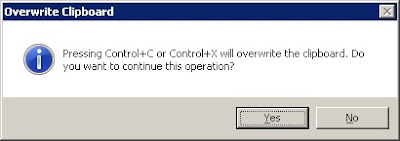Using the FS Clipboard - JAWS - MAGic
If you use any kind of AT software you’ll be well aware of some of the additional tricks that you can pull off to make your daily digital life that little bit easier. One of those little helpers is the FS Clipboard feature, available in both the JAWS screenreader and also MAGic, the magnification and speech software also produced by Freedom Scientific.
FS Clipboard adds a bit of spin to the normal Windows clipboard as you append rather than replace any existing content. Normally, when you select some text and use CONTROL C to copy to the clipboard, what you are copying replaces the current contents of the Windows clipboard. However, with the JAWS and MAGic FS Clipboard feature, every time you copy you add to the existing contents as opposed to replace them. Let’s go through an example.
Appending Content in the FS Clipboard
In this example, we’re going to create a list of reference numbers and then copy some of those numbers to the FS clipboard for pasting in later in a new location. I should add that if you are running JAWS or MAGic the steps are identical.
- Open a new document in MS Word or equivalent.
- Type in a few lines of data, something like ten should be enough. I’ve chosen to create some short references, like this: A1001, A1002, A1003 and so on.
- Now, move to the top of the list with CONTROL HOME and select the first reference number using SHIFT with the ARROW KEYS.
- Remember you can repeat what is currently selected using INSERT SHIFT DOWN ARROW in JAWS and MAGic. (With MAGic you may also use the MAGic key of CAPSLOCK instead of INSERT.) Additionally, if you are using JAWS, you can use INSERT SHIFT DOWN ARROW twice quickly to have your selection spoken character by character.
- With the content selected and checked, instead of using the standard Windows keystroke of CONTROL C, use INSERT WINDOWS C to copy instead.
- Move the cursor in your list now and choose one of the other reference numbers. Select it as before and copy to the FS Clipboard with INSERT WINDOWS C. Repeat this step another couple of times.
- With a few entries now in the FS Clipboard, let’s check the content. Use INSERT SPACEBAR, then tap letter C (MAGic users can also use CAPSLOCK SPACEBAR instead). A virtual viewer will open and from there you can read all the text you have copied. When you have finished checking the content, use ESCAPE to close the viewer.
- Now move the cursor to a new position and paste in the FS Clipboard contents using CONTROL V. Check that everything is as you expect it to be – you’re done.
A neat finishing touch to this FS Clipboard feature is that if you accidentally use CONTROL C instead when you are copying your data, it doesn’t wipe the FS Clipboard content immediately. JAWS or MAGic will pop a warning message box up on screen indicating that if you continue you’re going to lose the content in the FS Clipboard contents. Very nice – because if there is one keystroke that everyone knows by instinct, it’s got to be CONTROL C!
The FS Clipboard is a useful tool that has been around for a while, so if you are using JAWS or MAGic and are often faced with moving non-contiguous data from one location to another, this is an option worth adding to the toolbox if you haven’t already.
Until next time, have fun!

